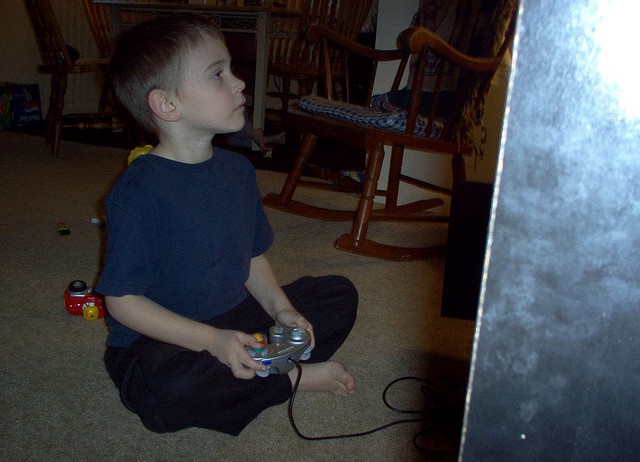In my work as a child clinical neuropsychologist, I field questions about how to help children with ADHD who tend to become overly focused on screen-based technologies. Parents whose children usually exhibit an inability to sustain focus and persist on tasks at home and school report difficulty getting that same child to walk away from a video game. Many parents admit to becoming so frustrated that they raise their voices in order to gain the attention of their screen-hypnotized child. The parents I speak to would prefer to find a healthier and more effective method to limit their child’s video game play. I recommend they use a Play Diet to limit screen time.
Some experts suggest that to solve this issue of over-absorption you simply remove all screens from your child’s life. This strategy is impractical and counterproductive in today’s digital world. Some screen-based activity, such as playing action and puzzle video games, can actually enhance your child’s selective attention and problem-solving skills. For 21st century children, mastering technology is a powerful and necessary skill. Particularly for those children who struggle with school, learning to effectively use apps that assist them with organization, planning, and time management can lead to academic and real world success.
From my perspective, not only as a psychologist but as a parent, the most effective method of moderating screen time is a proactive approach that I call a “Play Diet.” A balanced Play Diet consists of opportunities for physical, social, creative, unstructured, and digital play. I have written about Play Diets extensively in my new book, Playing Smarter in a Digital World, and this principle is behind everything we do at LearningWorks for Kids.
For children who are overly focused on screen-based technologies, enforcing a healthy Play Diet is necessary. Here are some basic strategies to help:
1. Set a regular schedule for screen-based play. The most common and successful schedules include “an hour per day,” ”after your homework is done,” and “only on weekends or holidays.”
2. Curate content. Choose and collect acceptable digital content and allow access only to that. Select games by genres or educational value and allow your child to play these games on a regular basis. Be certain that you find games that are “digitally nutritious,” such as Minecraft, Portal 2, or The Legend of Zelda.
3. Control the controller. Be in charge of what your child can play. For kids who are argumentative about screen time, parents need to be totally in charge of access to the technologies. This might mean placing the router to the Internet in your bedroom and turning it off at a regular time, maintaining video game consoles under lock and key, and retaining ownership to tablet and mobile devices, allowing access only with your direct permission.
You want your child to be responsible with their video game play, and the overarching goal should be to help a child to regulate their own amount of screen time. For those children who are simply unable to do so, however, the aforementioned strategies will serve to reduce conflict.
For more on setting limits, see other posts in the series:
Setting Limits: Limiting Children’s Screen Time Through Curation
Setting Limits: Should Children with ADHD or Autism Play Video Games?




